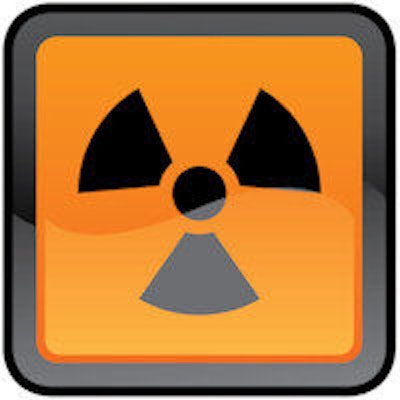
Radiation from cardiac catheterization procedures is taking a heavy toll on cath lab personnel, according to a new study published April 12 in Circulation: Cardiovascular Interventions. Italian researchers found higher rates of orthopedic problems, cataracts, skin lesions, and even anxiety and depression in cath lab workers.
The cath lab personnel had 7.1 times higher odds of having orthopedic problems, 6.3 times the odds of having cataracts, and 2.8 times the odds of having skin lesions. And workers with more than 16 years of experience in the cath lab had three times the odds of developing cancer.
The findings reinforce the need for more stringent radiation safety practices at cath labs around the world, the researchers wrote.
"The present survey shows that workers performing fluoroscopically guided cardiovascular procedures have significantly higher risk of several health problems compared with unexposed subjects," the researchers wrote (Circ Cardiovasc Interv, April 12, 2016).
Growing awareness
While healthcare in recent years has focused on reducing radiation dose exposure to patients, awareness has also been growing of radiation's risk to personnel who operate medical imaging equipment. A particular point of focus has been interventional radiology and cardiology systems, such as those used for fluoroscopically guided cardiac cath and electrophysiology procedures.
Earlier research has documented orthopedic and musculoskeletal injuries among interventional personnel due to the heavy lead aprons they must wear during procedures, the authors noted. But the occupational risk of long-term radiation exposure has been less well studied.
Indeed, a cluster of left-sided brain cancers have been observed among interventional cardiologists, which may be occurring because the head is typically not shielded during interventional procedures, and the left side of the head is more exposed to radiation than the right, the authors wrote in an email to AuntMinnie.com.
To investigate the health risks to cath lab personnel, the group led by Maria Grazia Andreassi, PhD, of the CNR Institute of Clinical Physiology in Pisa decided to survey attendees at meetings of the Italian society of interventional cardiologists in 2011 and 2012 and at a meeting of Italian electrophysiologists in 2014.
The survey asked respondents to list their current and past medical history, such as orthopedic problems, skin lesions, cataracts, heart disease, and other ailments, as well as feelings of stress and depression. They were also asked how long they had been working in cath labs and to list other factors that could contribute to health problems, such as histories of smoking and alcohol use.
In all, 746 questionnaires were properly filled out; 466 came from healthcare personnel who had exposure to radiation, while 280 were from those without exposure. The exposed personnel had worked for a median of 10 years and consisted of 218 interventional cardiologists/electrophysiologists, 191 nurses, and 57 technicians.
Lifetime cumulative radiation exposure was reconstructed for 73 of the respondents, 45 of whom were physicians and 28 of whom were nurses. For physicians in the study, the lifetime median exposure was 21 mSv; for nurses it was 7 mSv. This level may be low: Other studies have estimated that annual exposure was as high as 5 mSv per year before the use of lead aprons became common.
The group then calculated the rates of medical conditions reported by staff exposed to radiation and compared them with the personnel who were not exposed. For every condition except cancers, diabetes mellitus, and cardiovascular events, the exposed group had a higher rate of incidence than the unexposed group on a statistically significant basis.
| Rates of medical conditions by radiation exposure | |||
| Condition | Interventional cardiology group | Unexposed group | p-value |
| Orthopedic illness | 30.3% | 5.4% | < 0.001 |
| Hypertension | 12.9% | 7.5% | 0.02 |
| Anxiety/depression | 12.4% | 2.1% | < 0.001 |
| Hypercholesterolemia | 12% | 4% | < 0.001 |
| Skin lesions | 8.6% | 2.9% | 0.002 |
| Thyroid disease | 7.5% | 3.6% | 0.03 |
| Cataracts | 4.7% | 0.7% | 0.003 |
| Cancer | 2.6% | 0.7% | 0.09 |
| Diabetes mellitus | 1.5% | 1.1% | 0.62 |
| Cardiovascular events | 0.2% | 0.7% | 0.29 |
While most research on the effects of radiation on humans focuses on cancer, the authors found that the difference in cancer incidence rates between the two groups was not statistically significant, at least across the entire study population. This is most likely due to the overall small number of cancers experienced in the groups, the authors noted.
This changed when looking at a subset of the radiation-exposed group with more years of occupational exposure. Workers with 16 or more years of radiation exposure had nearly nine times the risk of cancer (odds ratio, 8.7; p = 0.02) after adjusting for age, sex, and smoking. What's more, there was a higher trend toward left-sided cancer, with 67% of physicians having their cancers on this side of their body.
With respect to cardiovascular events, the investigators did not find a statistically significant difference between the groups. But they did find a difference in what could be risk factors for vascular disease, such as hypertension and high serum cholesterol. Such levels were also recorded in atomic bomb survivors, and their impact is supported by recent studies that associate chronic low-dose radiation exposure with early signs of vascular aging and subclinical atherosclerosis.
"There is now considerable epidemiological evidence for increased risk of long-term cardiovascular effects among people exposed even at moderate and low dose levels of ionizing radiation exposure," the authors wrote in an email to AuntMinnie.com.
Finally, healthcare personnel exposed to radiation reported rates of anxiety and depression that were six times higher than those of unexposed staff -- another statistically significant finding. This could represent the higher stress imposed by interventional work, but it could also represent the effects of radiation, as previous studies have shown that chronic low doses can have a detrimental effect on hippocampal neurogenesis and neuronal plasticity, with resulting effects on mood stability.
More awareness is needed
Regarding study limitations, the authors acknowledged that for most of the study respondents, they relied on radiation dose data derived from the self-reported volume of procedures performed. They noted that a large study of some 44,000 physicians who perform procedures under fluoroscopy guidance is underway under the auspices of the Multi-Specialty Occupational Health Group, a group of medical societies that represent interventional physicians, as part of a larger U.S. government study on radiation workers with lifetime dosimetry data.
The authors concluded by noting that their findings reinforce the need for continued efforts to raise awareness of the risks that radiation exposure pose to cardiac cath lab workers.
"Every effort should be made to raise the radiation awareness in the professional communities of interventional cardiologists and cardiac electrophysiologists, promoting justification of the examination, optimization of the dose, and maximal protection of the radiation workers," they wrote.



















